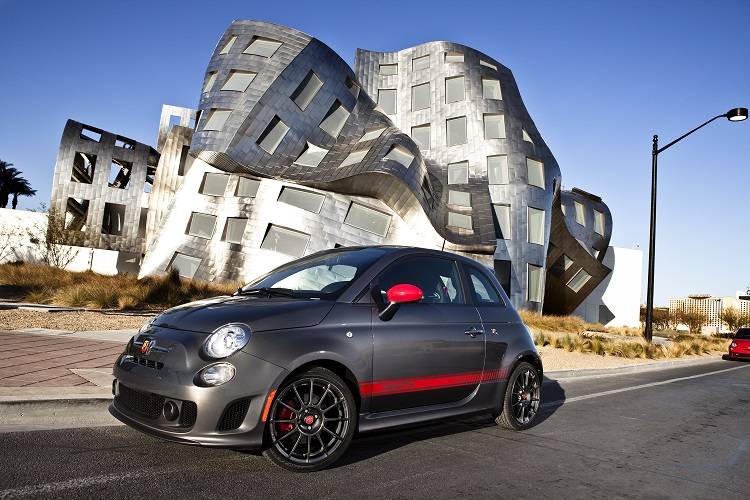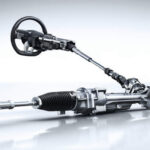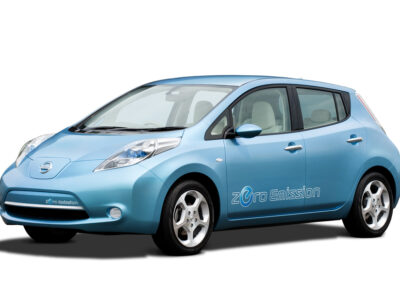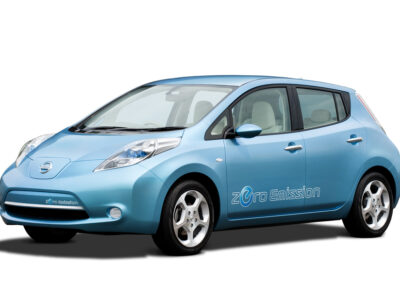
Fixing a Vibrating Clutch Pedal in Diesel Fiat 500 Models

The Fiat 500 is a popular city car known for its stylish design and fuel-efficient diesel engines. However, some owners of diesel models have reported issues with a vibrating clutch pedal, which can be annoying and concerning. If you're experiencing this problem, it's essential to address it promptly to avoid any potential damage to your vehicle's transmission or clutch system. In this article, we'll explore the common causes of a vibrating clutch pedal in diesel Fiat 500 models and provide guidance on how to diagnose and fix the issue, getting your car running smoothly and quietly once again.
Diagnosing the Cause of a Vibrating Clutch Pedal in Diesel Fiat 500 Models
The clutch pedal in Diesel Fiat 500 models can sometimes be plagued by a vibrating or oscillating motion when pressed, which can be quite annoying and concerning for drivers. To tackle this issue, it's crucial to understand the potential causes behind it. The vibration is often related to the clutch system or its interaction with other components of the vehicle.
Understanding the Clutch System
The clutch system in Diesel Fiat 500 models is designed to facilitate smooth gear transitions by temporarily disconnecting the engine from the transmission. A vibrating clutch pedal can be indicative of a problem within this system, such as worn-out clutch components or misalignment. It's essential to inspect the clutch assembly and its associated parts for any signs of wear or damage.
Potential Causes of Vibration
Several factors can contribute to a vibrating clutch pedal, including imbalance in the flywheel, issues with the clutch release bearing, or problems with the pressure plate. In some cases, the vibration might be due to uneven wear on the clutch disc. A thorough examination is necessary to pinpoint the exact cause.
Repair and Replacement Procedures
To fix the vibrating clutch pedal, one may need to replace or repair the faulty components identified during the diagnosis. This could involve replacing the clutch disc, resurfacing or replacing the flywheel, or installing a new clutch release bearing. The specific steps and required parts will depend on the root cause of the vibration.
| Symptom | Possible Cause | Recommended Action |
|---|---|---|
| Vibrating clutch pedal | Worn-out clutch components or misalignment | Inspect and replace clutch assembly parts as needed |
| Clutch pedal vibration during pressing | Imbalance in the flywheel or clutch release bearing issues | Check and replace the flywheel or clutch release bearing if necessary |
| Uneven clutch engagement | Uneven wear on the clutch disc | Replace the clutch disc and inspect other clutch components |
How do you fix a vibrating clutch pedal?

To fix a vibrating clutch pedal, you need to identify the underlying cause of the vibration. A vibrating clutch pedal can be caused by a variety of factors, including a worn or damaged clutch disc, a misaligned clutch assembly, or a problem with the clutch release bearing.
Checking the Clutch Assembly
The clutch assembly should be inspected for any signs of wear or damage. This includes checking the clutch disc, pressure plate, and flywheel for excessive wear or damage.
- Inspect the clutch disc for signs of wear, such as glazing or excessive thinning.
- Check the pressure plate for any signs of wear or damage, such as cracks or excessive heat damage.
- Inspect the flywheel for any signs of wear or damage, such as excessive scoring or heat damage.
Inspecting the Clutch Release Bearing
The clutch release bearing should be inspected for any signs of wear or damage. A worn or damaged clutch release bearing can cause the clutch pedal to vibrate.
You may be interested in reading Replacing Worn Suspension Components on a Fiat 500
Replacing Worn Suspension Components on a Fiat 500- Check the clutch release bearing for any signs of wear or damage, such as excessive play or noise.
- Inspect the clutch release bearing mounting for any signs of looseness or damage.
- Lubricate the clutch release bearing to ensure it is properly lubricated.
Adjusting or Replacing the Clutch Assembly
If the clutch assembly is found to be worn or damaged, it may need to be adjusted or replaced. This can involve adjusting the clutch cable or hydraulic system, or replacing the clutch disc, pressure plate, or flywheel.
- Adjust the clutch cable or hydraulic system to ensure proper clutch engagement and disengagement.
- Replace the clutch disc, pressure plate, or flywheel if they are found to be worn or damaged.
- Bleed the hydraulic system to remove any air that may have entered the system during the repair.
What is the clutch problem with the Fiat 500?

The Fiat 500 is a popular city car known for its stylish design and compact size. However, some owners have reported issues with the clutch system, which can be a significant problem. The clutch problem with the Fiat 500 is related to the wear and tear of the clutch components, which can lead to premature failure.
Common Clutch Issues
The clutch issues in the Fiat 500 can be attributed to various factors. One of the primary reasons is the design of the clutch system itself. The clutch is a critical component that engages and disengages the engine from the transmission, allowing the driver to shift gears smoothly. However, in the Fiat 500, the clutch can be prone to wear and tear, leading to problems such as:
- Slipping or hesitation when shifting gears
- Grinding or screeching noises when pressing the clutch pedal
- Clutch pedal feels spongy or soft
Causes of Clutch Failure
The causes of clutch failure in the Fiat 500 can be attributed to a combination of factors. One of the primary reasons is the driving style of the owner. Aggressive driving, such as rapid acceleration and braking, can put excessive wear on the clutch components. Additionally, the quality of the clutch components and the maintenance history of the vehicle can also contribute to premature failure. Some of the common causes of clutch failure include:
- Excessive wear on the clutch disc and pressure plate
- Contamination of the clutch components with dirt and debris
- Insufficient maintenance, such as failing to adjust the clutch cable
Repair and Replacement Options
If the clutch problem is diagnosed early, it may be possible to repair or replace the affected components. In some cases, the clutch assembly may need to be replaced entirely. The cost of repair or replacement can vary depending on the extent of the damage and the labor costs of the repair shop. Some of the options for repair and replacement include:
- Replacing the clutch disc and pressure plate
- Rebuilding or replacing the clutch assembly
- Upgrading to a high-performance clutch kit
What is the problem with the Fiat 500 diesel engine?

The Fiat 500 diesel engine has been associated with several issues that have raised concerns among car owners and potential buyers. One of the primary problems is related to the engine's reliability and durability.
Reliability Concerns
The Fiat 500 diesel engine has been known to experience issues with its fuel system, which can lead to problems such as decreased performance, rough idling, and in some cases, engine failure. The fuel system issues can be attributed to a variety of factors, including:
You may be interested in reading Replacing Worn Suspension Components on a Fiat 500
Replacing Worn Suspension Components on a Fiat 500 How to Replace a Faulty Power Steering Motor in a Fiat 500
How to Replace a Faulty Power Steering Motor in a Fiat 500- Clogged fuel injectors, which can cause the engine to run rough and lose power.
- Faulty fuel pumps, which can lead to a decrease in fuel pressure and engine performance.
- Contamination of the fuel system, which can cause damage to the engine and its components.
Common Complaints
Car owners have reported several common complaints related to the Fiat 500 diesel engine, including excessive oil consumption, engine noise, and vibrations. These issues can be caused by a variety of factors, including worn engine components, low oil levels, and faulty engine mounts. Some of the specific problems that have been reported include:
- Excessive oil consumption, which can lead to increased maintenance costs and decreased engine longevity.
- Engine noise and vibrations, which can be caused by worn engine components or faulty engine mounts.
- Engine stalling or failure to start, which can be caused by issues with the fuel system or other engine components.
Maintenance and Repair
To minimize the risk of problems with the Fiat 500 diesel engine, regular maintenance is essential. This includes regular oil changes, fuel filter replacements, and inspections of the engine and its components. Car owners should also be aware of the potential for costly repairs, including:
- Replacing the fuel pump or fuel injectors, which can be expensive and time-consuming.
- Rebuilding or replacing the engine, which can be a major undertaking.
- Replacing other engine components, such as the turbocharger or engine mounts, which can also be costly.
What is the clutch recall on Fiat?

The clutch recall on Fiat is related to a potential issue with the clutch system's components, which may cause the clutch to fail or malfunction. This recall affects certain models of Fiat vehicles, and the issue is related to the clutch master cylinder or other related components.
Reason for the Clutch Recall on Fiat
The clutch recall on Fiat is due to a potential problem with the clutch system that could cause it to fail or not function properly. The issue is related to the clutch master cylinder or other components that are part of the clutch system. The faulty component can cause the clutch to malfunction, leading to a loss of control over the vehicle's transmission.
- The faulty clutch master cylinder may leak fluid, causing the clutch to fail.
- The clutch system may not function properly, leading to difficulties when shifting gears.
- The issue can cause the vehicle to stall or lose power, potentially leading to a safety hazard.
Fiat Models Affected by the Clutch Recall
The clutch recall on Fiat affects certain models of the company's vehicles. The recall is specific to certain model years and trim levels, and not all Fiat vehicles are affected. The models affected by the recall are typically those with manual transmissions.
- The recall affects certain Fiat 500 models with manual transmissions.
- Some Fiat 500L models with manual transmissions are also affected by the recall.
- The recall may also affect other Fiat models with similar clutch systems.
Steps to Take if Your Fiat is Affected by the Clutch Recall
If your Fiat vehicle is affected by the clutch recall, you should take it to a authorized Fiat dealership for inspection and repair. The dealership will inspect the clutch system and replace any faulty components. You may also be eligible for reimbursement for any repairs related to the issue.
- Check with Fiat or the National Highway Traffic Safety Administration (NHTSA) to see if your vehicle is affected by the recall.
- Contact a authorized Fiat dealership to schedule an appointment for inspection and repair.
- Follow the instructions provided by the dealership to ensure that the issue is properly addressed.
Frequently Asked Questions
What causes a vibrating clutch pedal in Diesel Fiat 500 models?
A vibrating clutch pedal in Diesel Fiat 500 models is typically caused by worn-out or misaligned clutch components, such as the clutch disc, pressure plate, or release bearing. Additionally, issues with the clutch master or slave cylinder, or a worn-out flywheel can also contribute to the vibration. In some cases, a faulty engine or transmission mount can also cause the clutch pedal to vibrate.
How do I diagnose a vibrating clutch pedal in my Diesel Fiat 500?
To diagnose a vibrating clutch pedal, start by checking the clutch components for wear or misalignment. Inspect the clutch disc, pressure plate, and release bearing for signs of wear. Also, check the clutch master and slave cylinder for leaks or damage. Additionally, inspect the engine and transmission mounts for any signs of wear or damage. A thorough inspection will help you identify the root cause of the vibration.
You may be interested in reading Replacing Worn Suspension Components on a Fiat 500
Replacing Worn Suspension Components on a Fiat 500 How to Replace a Faulty Power Steering Motor in a Fiat 500
How to Replace a Faulty Power Steering Motor in a Fiat 500 Fixing Loose Trim and Interior Rattles in Your Fiat 500
Fixing Loose Trim and Interior Rattles in Your Fiat 500Can I fix a vibrating clutch pedal myself in my Diesel Fiat 500?
While some DIY enthusiasts may be able to fix a vibrating clutch pedal, it's generally recommended to seek the help of a professional mechanic, especially if you're not familiar with clutch repair. Replacing clutch components or adjusting the clutch linkage requires specialized tools and expertise. A professional mechanic can diagnose the issue and perform the necessary repairs to ensure a smooth and safe driving experience.
How much does it cost to fix a vibrating clutch pedal in a Diesel Fiat 500?
The cost to fix a vibrating clutch pedal in a Diesel Fiat 500 varies depending on the root cause of the issue. Replacing clutch components can range from $500 to $1,500, depending on the extent of the repairs needed. Additional costs may be incurred if other components, such as the flywheel or engine mounts, need to be replaced. A professional mechanic can provide a more accurate estimate after diagnosing the issue.

If you want to know other articles similar to Fixing a Vibrating Clutch Pedal in Diesel Fiat 500 Models you can visit the category Maintenance.
Leave a Reply






More content of your interest